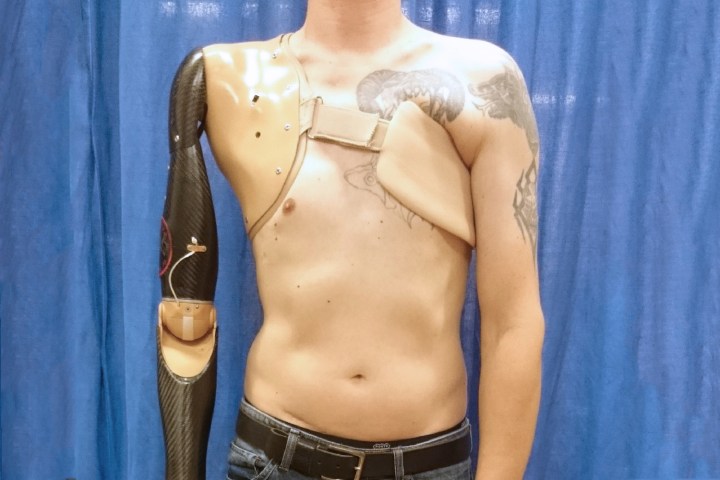
In order to use the prosthesis, wearers think of actions, which are then interpreted as commands courtesy of electrical signals sent from the spinal motor neurons.
“Through means of advanced computational neuroscience, combined with the state of the art surgical techniques, we have shown that using non-invasive technology we can decode user’s movement intention all the way down at the level of the spinal cord,” Ivan Vujaklija, one of the researchers who worked on the project, told Digital Trends. “With this, we have established highly functional and precise man-machine interface which can be applied in control of bionic limbs.”
The robotic arm potentially represents a significant step forward from existing robot prostheses, which often rely on users controlling them via frequently damaged remnant shoulder and arm muscles. It also compares favorably to some of the more cutting-edge robotic prosthesis projects that require users to wear EEG caps or percutaneous implants for brain signal recordings.
In lab experiments carried out at Imperial College, six amputee or partial-amputee volunteers were able to use the robotic arms to show off a greater range of motion than would be possible using a regular muscle-controlled prosthesis.
It all sounds extremely promising, although Vujaklija was eager to point out that a finished product is still a way off.
“The work presented is a proof of concept which involved strictly laboratory tests,” he said. “The next stage is to optimize the developed technology and commence the translational activities, which will include extensive clinical tests with focus on robustness and miniaturization of the system. The idea would be to adapt and evaluate the system across a larger population of volunteers with different levels of impairment.”


